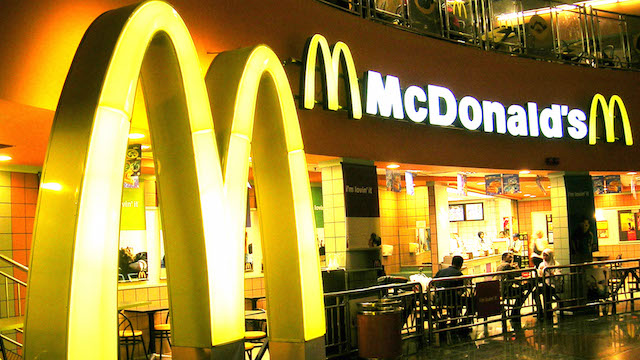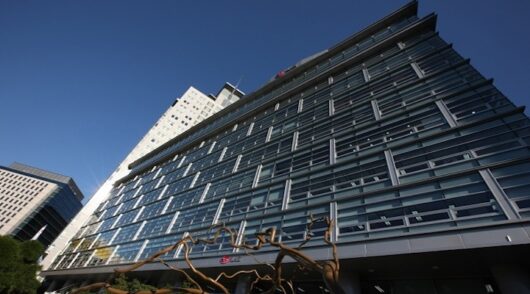Following a couple of quarters of strong growth, McDonald’s numbers for the latest three months are a little more subdued.
Putting aside the 3.6 per cent decline in global revenues – which are mostly due to the impact of refranchising – global sales edged up by a respectable, but moderate 3.1 per cent. More significantly, the US saw only sluggish growth of 1.8 per cent – a disappointing outcome given recent progress and the soft comparative of a 2 per cent decline during the same period last year.
Despite the slowdown the results are not disastrous: they remain in positive territory and show that the changes the company has made, including its McDonald’s menu revamp, continue to gain favor with customers. That said, they raise a question: is McDonald’s turnaround plan running out of steam or is this simply a blip in growth? The truth is that the more sluggish performance is a mix of both.
There is no doubt that in the US the market as a whole was weak across the reporting period, with lower growth in consumer expenditure on fast food and casual dining. Indeed, this trend has been evident in the recent results of rivals like Starbucks and Yum! Brands, both of which saw a dip in their revenue growth. Given its exposure to the market there is no reason McDonald’s should be immune from this trend.
That said, the market slowdown probably trimmed 1.9 percentage points from US comparable sales. This would give McDonald’s a 3.7 per cent growth rate which is still a little way below the performance of the past few quarters. There are two main reasons for this: the normalisation of trade following the menu changes, and the dynamics of the menu changes themselves.
Normalisation
Taking the normalisation of trade point first, this is something that was inevitable after the initial spike of interest following initiatives like the introduction of the all-day breakfast. The changes in themselves, along with a strong marketing campaign, drove restaurant traffic and helped to boost sales. Now that the initial excitement has faded, the benefit to sales is not as strong. The McDonald’s menu change was, in our view, right and will continue to be an important contributor to growth going forward; but the initial levels of uplift it created were never sustainable.
The second point relates to the dynamics of the McDonald’s menu changes. One of the impacts of all-day breakfast and the McPick2 menu, which allows a choice of two products for $2, has been to provide diners with cheaper options. Many have exploited this and average transaction values for lunch and dinner have fallen as a consequence, something that has put a dampener on overall sales growth, even if it has been helpful to volumes.
In most markets, the pricing differential between breakfast items and lunch and dinner items is fairly pronounced, and this may be something McDonald’s needs to assess over the next six months to see if there is any way to remedy the down-trading trend without losing custom.
Finding a solution to this issue is important, not least because the introduction of more menu choice has added to complexity and costs: a major source of complaint from franchisees. While the changes are essential – and McDonald’s was right to make them – squaring the circle must now involve finding a way to protect and bolster margins – especially so against the backdrop of rising labor costs.
Create Your Taste
One of the potential solutions to this is to offer a slightly more upscale, margin-rich offering alongside the standard product – which is precisely the thinking behind the Create Your Taste (CYT) initiative. CYT allows customers to design their own custom burgers by picking from a range of 35 or so different ingredients, including more ‘premium’ foodstuffs like guacamole. This, along with the introduction of table service, will allow McDonald’s to tap customers wanting, and prepared to pay for, a better product and experience. It will also, in some cases, entice existing customers to trade up.
All of this is fine in theory, but the challenge comes in execution. Although CYT and table service will not be offered in every restaurant, in those where it forms part of the offer operational complexity and labor costs will increase and, in essence, will change McDonald’s traditional business model. This is a risk and also a barrier to the service being rolled out more widely.
The solution to all of this likes in more automation – something that McDonald’s has started but is still a long way off perfecting. Domino’s provides a great example of how bespoke products can be delivered by using automation (via its websites and apps) to gather and process customer orders. If McDonald’s is to deliver its changes profitably it needs to forge ahead with this model so that it can simultaneously keep a cap on labor costs at its restaurants while delivering superior products, service and growth.
In short, McDonald’s is making the right changes, and its product enhancements and developments have returned it to growth. However, further changes to the wider business model are now critical if it is to be successful over the longer term.
- Neil Saunders is CEO of retail analyst Conlumino.






